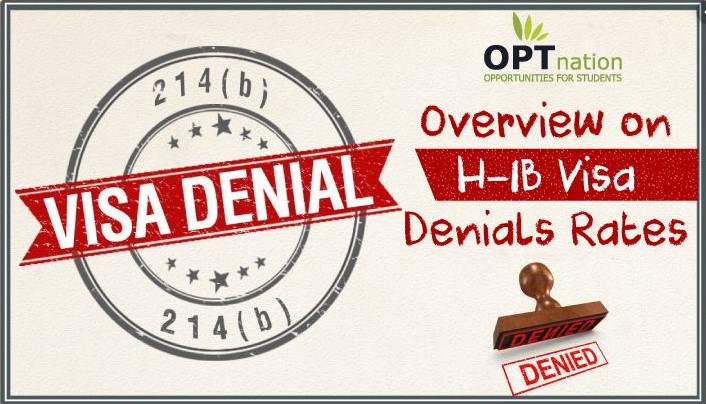Photo courtesy: OPTNation.com
NRI Pulse Staff Report
Atlanta, GA, November 5, 2019: Denial rates for H-1B petitions have increased significantly, rising from 6% in FY 2015 to 24% through the third quarter of FY 2019 for new H-1B petitions for initial employment, according to a National Foundation for American Policy (NFAP) analysis of U.S. Citizenship and Immigration Services (USCIS) data.
H-1B petitions for “initial” employment are primarily for new employment, typically a case that would count against the H-1B annual limit. H-1B petitions for “continuing” employment are usually extensions for existing employees at the same company or an H-1B visa holder changing to a new employer.
In the first three quarters of FY 2019, USCIS adjudicators denied 24% of H-1B petitions for “initial” employment and 12% of H-1B petitions for “continuing” employment.
The 12% denial rate for continuing employment is also historically high – 4 times higher than the denial rate of only 3% for H-1B petitions for continuing employment as recently as FY 2015.
Between FY 2015 and FY 2018 and FY 2019 the denial rate for new H-1B petitions for initial employment quadrupled from 6% to 24%. To put this in perspective, between FY 2010 and FY 2015, the denial rate for “initial” H-1B petitions never exceeded 8%, while today the rate is 3 times higher.
This analysis of H-1B data is an update to an April 2019 NFAP report and August 2019 study on H-1B denial rates. The analysis is based on data from USCIS H-1B Employer Data Hub.
NFAP analyses differ from USCIS’s presentation of the data by separating out initial employment (mostly new employees) and continuing employment (mostly an extension for existing employees) to allow a clearer picture of adjudications.
“The administration’s own data show foreign-born scientists and engineers have been targeted for new immigration restrictions,” said Stuart Anderson, executive director of the National Foundation for American Policy and counselor to the Commissioner of the Immigration and Naturalization Service (INS) under President George W. Bush.
“The term ‘merit-based’ immigration is still only a slogan. It does not reflect any administration policies to make it easier for high-skilled foreign nationals to work in the United States.”
While there was a “decline” in the denial rate for H-1B petitions for initial employment during the third quarter of FY 2019, that does not reflect a relaxation in restrictive administration policies but can be explained by USCIS adjudicators approving the most easily approvable cases selected in the April 2019 “lottery” for H-1B petitions that count against the annual limit – and issuing Requests for Evidence (RFEs) for other cases. Additional USCIS data support this.
The third quarter of FY 2019 is from April 1, 2019 through June 30, 2019, and according to USCIS data for FY 2019, the two months with the lowest rate of “completions with a Request for Evidence” were May and June of 2019. USCIS does not separate out RFEs for “initial” employment (primarily for new employees) from those for “continuing” employment (primarily for existing employees). However, attorneys note due to the time involved, a case receiving a Request for Evidence after being selected in the April 2 2019 lottery is unlikely to have been adjudicated by June 30, 2019 (i.e., the third quarter of FY 2019).
The 24% denial rate for new H-1B petitions for initial employment through the third quarter of FY 2019 represents a decrease from a 33% denial rate for new H-1B petitions through the first two quarters of FY 2019. The lower denial rate is a result of the third quarter denial rate of 10% for H1B petitions for initial employment decided between April 1 and June 30, 2019, which largely can be explained by USCIS adjudicators issuing Requests for Evidence for less easily approvable cases.
One would expect a higher denial rate for initial employment cases when data for the fourth quarter of FY 2019 become available and can be compared to the third quarter of FY 2019. Table 1 Denial Rate: H-1B Petitions for Initial (New) Employment.
HAVE YOU SUBSCRIBED TO OUR VIDEO NEWS CHANNEL YET?





